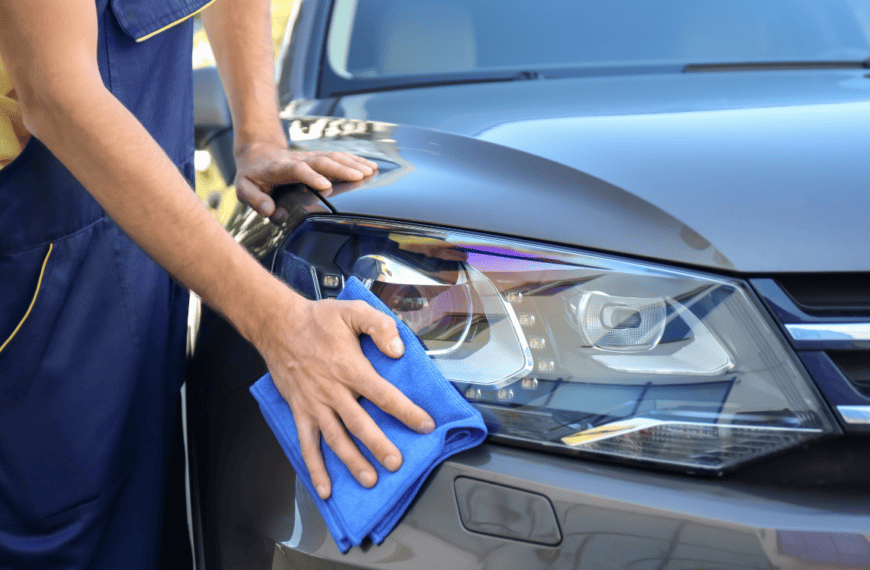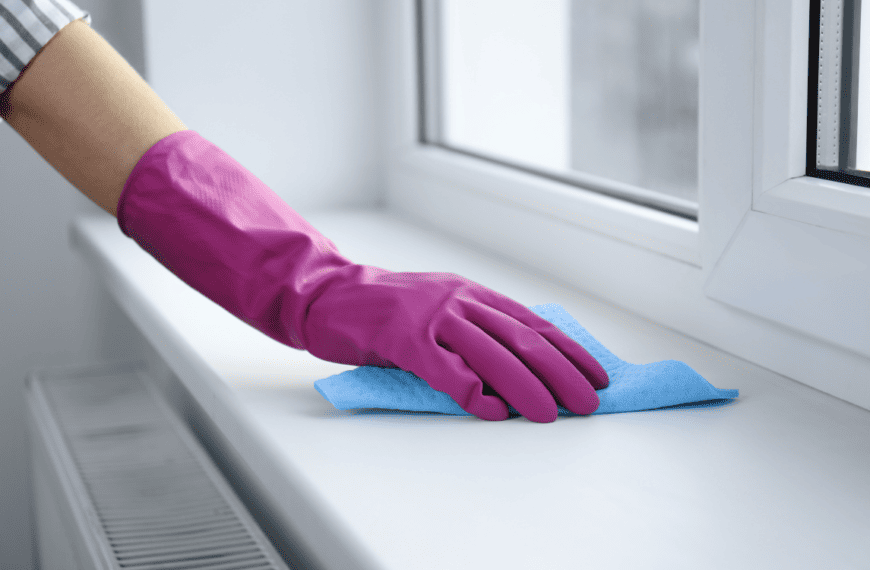Moving into a new home is always a thrilling prospect, but even after you unload the last box, there’s still plenty of work to do before your dream house becomes a reality. You have utilities and other services to set up, cleaning and inspections to grind through, and tons of organizing.
With all there is left in the moving process, it’s easy to lose sight of everything you need to accomplish. We’ll help you ensure you leave no stone unturned with these 24 essential tasks to knock out after moving into your new place.
1. Inspect Your House and Take Pictures
Over 75% of homeowners had to pay unexpected repair costs in their first year of ownership, but you can avoid the common fate simply by inspecting your new home. For renters, examining every corner of the home is a way to protect their security deposit. For homeowners, it’s a critical step in catching problems early so you can avoid enormous repairs.
Inspect all the rooms, looking in every corner for problems like plumbing leaks, mold, signs of pests, or slapdash repairs by the previous owner. Getting these fixed will be crucial to avoid more expensive repairs down the line and reduce the chance of any immediate health issues.
List, prioritize, and report any issues, and pay attention to the usable storage areas and space throughout the house so you can plan where everything will go.
2. Double Check Your Moving Boxes
Boxes will shift on the moving truck, so you’ll have to check for any damage before unpacking. Take fresh photos of any damaged items before opening them and follow up with the moving company. If you bought moving insurance, now would be a perfect time to make a claim.
3. Get Organized and Make Your To-Do List
Before you get settled in, create your to-do list to keep everyone coordinated. There’s stuff to unpack, people to call, and changes to make if you’re to get comfortable in your new residence.
Keep a running checklist of tasks to ensure you and your family members don’t repeat the same chore twice or overlook any crucial step. If you bought a new house, use the inspection report as a to-do checklist template for needed repairs.
4. Check the Perimeter
Don’t forget to check outside for problematic areas around your foundation, the landscaping, or any of the home’s fixtures. Some essential tasks to perform include:
- Inspecting the roof for damage
- Checking gutters and downspout positions
- Removing overgrown vegetation
- Ensuring the HVAC condenser is level and clean
- Inspecting the foundation for damage or cracks and gaps to fill
While you’re outside, you can also monitor your water meter. Check the water meter for changes when the water isn’t running to find a leak even if you don’t see any.
5. Contact Your Utility Companies
Ideally, you will have your utilities set up well before moving day, but if not, it’s crucial to do so without delay. Same-day activations aren’t always possible, and if they are, they’re usually expensive. Some essential services to transfer or start anew include water, electricity, gas, and the internet.
Confirm your trash and recycle pick-up days and procedures as well. If you have an HOA, find out what kind of services they provide so you can plan for them in your daily schedule.
6. Locate Your Electrical Panel and Water Shut-Off Valve
In case of a burst pipe, blown water heater, or electrical short, you’ll need to know how to respond immediately to protect your family and your property. Start by locating the circuit breaker box and the water shut-off valves in your home.
Check the circuit breaker layout against the diagram to see that it’s labeled and updated. If there isn’t a diagram, you will have to test the circuits and label them yourself. Look over the integrity of the circuit breakers to see if you need a new electrical panel. If your house has an old fuse box, updating to a breaker box will make life much easier and safer.
7. Inspect Your HVAC
Schedule an inspection on your AC unit and furnace to identify any issues before using them. While you can check and replace the air filters by yourself, a professional will identify any leaks, clogs, worn parts, electrical issues, or duct line problems that can lead to expensive repairs. Remember that annual maintenance is often necessary to retain the manufacturer’s warranty on your HVAC equipment as well.
8. Connect Your Laundry and Kitchen Appliances
While you have a clear path through the home, bring in and install the major appliances, or hook up existing items that are unplugged.
Start with the refrigerator. It takes roughly 12 hours for it to cool to a level where it can safely store food, so you need to prioritize it. If it came to the new house on its side, let your refrigerator stand upright for a day before you plug it in to prevent compressor damage.
9. Start the Unpacking Process
Start building and setting up your furniture. You don’t have to organize everything right now, but you should unpack essentials to make bathrooms and bedrooms usable. As long as you set up the main furniture pieces in the living room and dining room, you can wait on the various knick-knacks that fill out the shelves.
10. Test the Carbon Monoxide and Smoke Detectors
As you inspect your home, ensure functional smoke detectors are on every floor, including the basement. Position one in every bedroom and outside of sleeping areas in the hallway, following the NFPA’s guidelines for placement.
Carbon monoxide detectors should be on every floor of the home, especially near the furnace and gas-powered appliances. Do not place them near a fixture that produces an open flame.
11. Find Your Fire Extinguishers
Locate your fire extinguishers and check the tags to see if they are usable. Replace any expired extinguishers and fill any that show they need a recharge. If you live in a house with several floors, buy extra extinguishers to put on each level.
12. Look at Your Security System
Burglary rates are steadily decreasing around the nation, but there are still close to a million break-ins every year. Setting up a home security system should be a top priority no matter where you live.
Smart locks on your doors, alarm systems, and automated cameras can be a deterrent and an enormous help if someone breaks into your home. If your new place already has security equipment installed, contact the security company to make sure it works and have them add any desired security features to the house.
13. Change the Locks
Check the locks and latches on doors and windows. Even if you don’t install an alarm system immediately, you should still change the locks on all your exterior doors to ensure any previous tenants can’t gain access while you’re gone. Take the opportunity to upgrade to a convenient smart lock, one of many quick and easy ways to immediately boost your new home’s value with smart technology.
14. Childproof the Place
If you have kids running around during a chaotic move-in, it’s crucial to babyproof everything. That means mounting window guards and setting up anti-tip brackets, cabinet locks, outlet covers, and baby gates. Unpack and safely store any hazardous items, and do a walkthrough to ensure the kids can’t access anything dangerous.
15. Finish Unpacking and Recycle Packing Materials
After unpacking, break down and recycle any boxes in bad shape. If the boxes or packing materials are still intact, break them down and store them in a dry place with your other packing supplies for future moves.
16. Clean Up
Unpacking and moving items around the house will kick up a lot of dust, generate tons of garbage, and create a sizable mess. Refresh your space with a deep cleaning, or schedule a cleaning service to take care of it for you!
17. Leave a Moving Review
Always leave a review on the moving company, no matter how well they did. If they are amazing, they will appreciate the gesture. And if they did poorly, you can warn prospective customers and potentially get some remediation from the owner. Just remember to update your review if they do a good job handling your complaints and concerns.
18. Help Your Pets Adjust to the New Home
Moving to a new apartment or house will be a jarring experience for your pets. Help them adjust by giving them extra attention and playtime. Keep your cats in one area and slowly acclimate them to the rest of the place before letting them outside. Take your dog on short walks around the neighborhood to get them comfortable with the new location.
19. Update Your Mailing Address
If you didn’t change your mailing address with the post office before moving, hop online and do it as soon as possible. You’ll need to update your new address with your bank, credit card companies, insurance companies, subscription services, and any other entity that sends you mail.
When you move between states, you’ll need to go to the local DMV office to get a new driver’s license and update your motor vehicle registration. You will also have to update your voter’s registration.
20. Explore the Area
Once you’re settled and feeling good inside your home, it’s time to venture outside to meet your new neighbors and start planning routes around town. Find the best way to get the kids to school, the best stores to go grocery shopping, and the best entertainment for taking the family out on the weekend.
21. Go Shopping
With everything unpacked and the home cleaned and inspected, you should know all about your current home inventory and what you still need to get. Hit up the home improvement store, local big-box retailers, and supermarket to fill out the rest of your new home.
22. Sign on With New Health Care Providers
It usually isn’t the most time-sensitive task, but you will eventually need to research doctors, dentists, and veterinarians in your local area. Read reviews and identify professionals who match your needs to find the perfect providers for you and your family.
23. Register the Kids for School
Moving to a new city means you’ll also have to sign your kids up for a new school. Like finding the right health care providers, you’ll first need to retrieve your child’s records and then check reviews and get references to pinpoint a good school. Try to arrange an interview with the principal and visit your top choices in person.
24. Celebrate Your New House!
Introduce the locals to their new neighbor and call up any nearby friends and family members to get some help breaking the new place in by hosting a house-warming party. It’s hard work moving into a new house, and there’s an uncertainty and adjustment period that lingers long after you unpack. After the dust settles, you have everything set up, and it’s all working properly, celebrating your new place will be just the thing to get off on the right foot!
With these moving tips, you can make settling into your new life as seamless as possible. Of course, it doesn’t make the actual move any less of a chore. If you need some time to relax and reward yourself for your hard work, get the help you deserve by requesting a deep clean with Anita’s!









